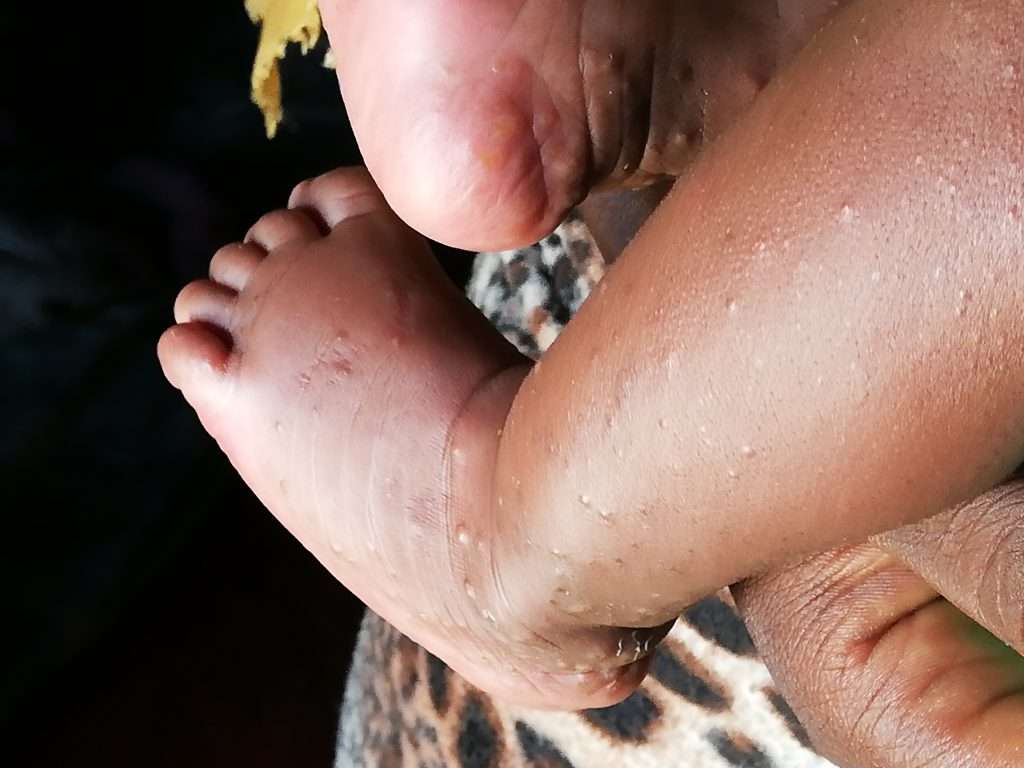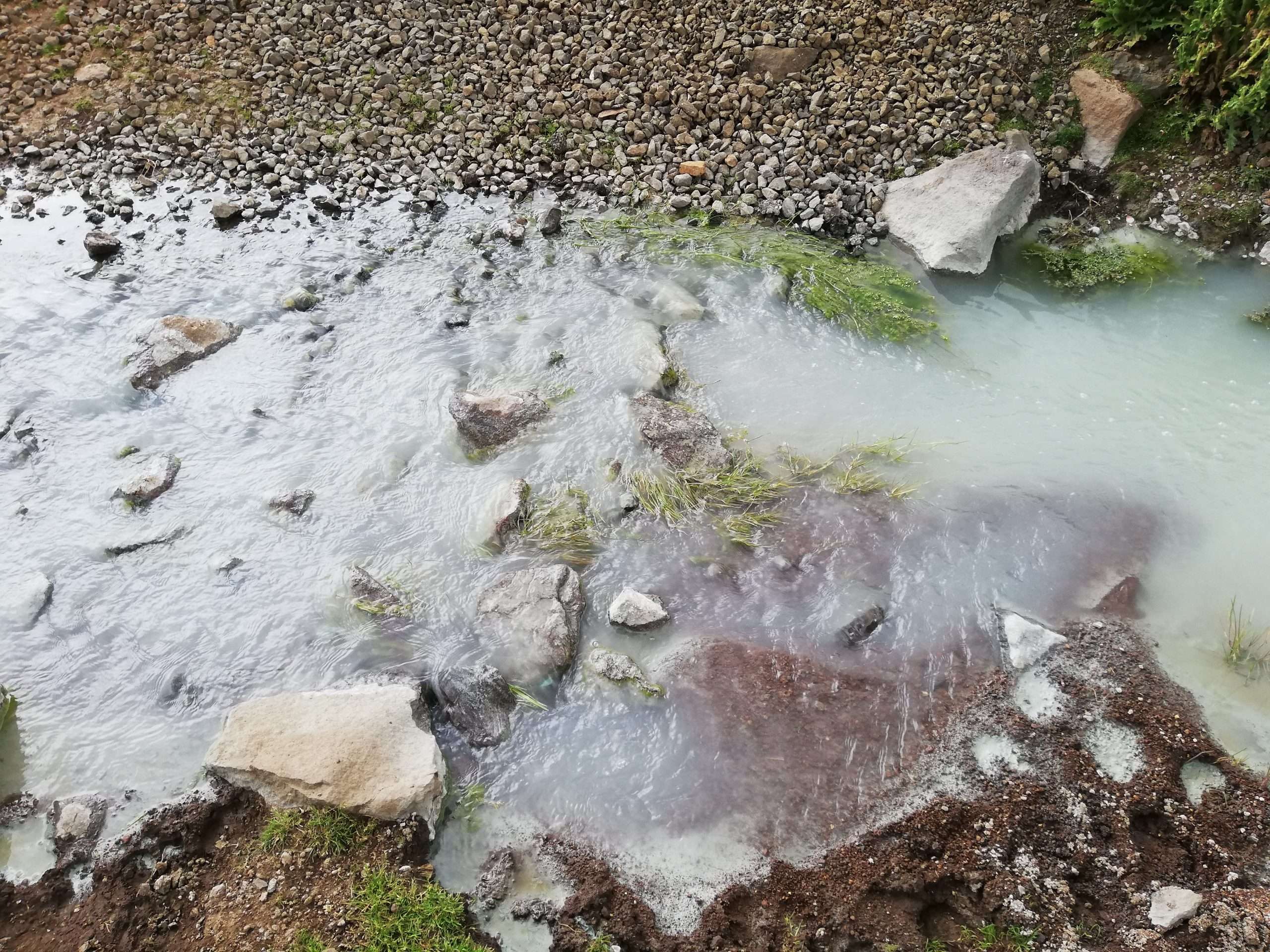Water polluted by Letšeng mine poses deadly risk to infants, probe uncovers
08 April 2024 by Pascalinah Kabi
This investigation was produced in partnership with the Pulitzer Centre.
Est Read Time: 8 min(s) 33 sec(s)
Listen to this article:

Infants who consume water from Maloraneng Stream could face a potentially deadly threat – suffocation induced by hemoglobinemia disease. This is according to a government report that concluded that the Letšeng Diamonds Mine is intentionally contaminating a stream that villagers daily depend on for survival.
“From the chemical perspective with parameters that DWA (Department of Water Affairs) laboratory was able to analyse, drinking this water will cause diarrhoea, sensitive individuals and infants will suffer from hemoglobinemia, in which case, they (sensitive individuals and infants) will suffocate, which can lead to death,” reads a January 2023 report compiled by the Department of Water Affairs.
The report further highlights that prolonged consumption of this water increases the risk of gastrointestinal cancer. Moreover, it reveals that the water exhibits severe taste and staining issues, as indicated by the results.
“The Maloraneng stream was found to be polluted indeed and the source was found to be a point source that can only be attributed to the LDM (Letšeng Diamonds Mine) given the parameters that are outside recommended limits.
“It has been scientifically proven that Maloraneng community’s complaints are valid and tally with the effects of parameters that were found to be above recommended limits,” read the report. Letšeng Diamonds Mine says it did not understand the connection between drinking water sources and hemoglobinemia.
“Therefore, we have no comment except to say that it is a documented medical fact that at elevations above 1000m, haemoglobin concentrations increase as an adaptive response to the lower partial pressure of oxygen and reduced oxygen saturation of blood,” Letšeng said on March 4, 2024.
A few years ago, the Maluti Community Development Forum reported the tragic death of a one-year-old infant being transported twelve kilometers on his grandmother’s back to access public health services.
Breach of mining lease agreement
Advocate Borenahabokhethe Sekonyela asserts that Letšeng Diamond Mine has violated its Mining Lease Agreement by persistently polluting Maloraneng stream.
“They have not only breached the Mining Lease Agreement, they have also breached the Mines and Minerals Act because they are not paying compensation; we still have to audit how much should they have paid,” Advocate Sekonyela said on February 29, 2024.
He added: “I cannot remember what specific provisions say should be done when the breach has happened but, unfortunately, the level of enforcement is very wanting.”
In 2019, the Lesotho government controversially renewed its mining lease agreement with Letšeng Diamonds Mine, a notable four years before its scheduled expiry date. The agreement was executed in accordance with section 44 of the Mines and Minerals Act, 2005.
Former Minister of Mines, Keketso Sello, who signed the agreement, revealed to The Post that he experienced “immense pressure” to finalize the lease after Letšeng reported him to then Prime Minister Thomas Thabane.
“They reported me to the Prime Minister and said I was refusing to sign the lease,” Sello said four years ago, adding that he is “relieved to have been moved from the Ministry of Mines.”
To date, this mining lease agreement remains shrouded in secrecy by the state. Seen by this reporter, Section 7.1 of the agreement reveals that Letšeng Diamonds Mine has been awarded Environmental Clearance concerning the mining lease and this Agreement.
“The Mining Company shall conduct Mining Operations in accordance with the Environmental Clearance or any replacement or amendment thereof,” reads Section 7.1.2.
Section 7.1.3 reads: “The Mining Company shall comply with the terms and conditions of the Environmental Clearance or any replacement or amendment thereof, the Environment Act and any other Applicable Laws pertaining to the environment.
“A material failure to comply with Applicable Laws pertaining to the environment, the terms of the Environmental Clearance or any replacement or amendment thereof, environmental licenses or permits; and this clause constitutes a breach of this Agreement.”
On March 4, 2024, Letšeng Diamonds Mine said a material breach of its non-compliance on environmental protection has not been established.
“For there to be a material failure of our compliance relating to the environmental clearances issued to Letšeng, there has to be a finding confirmed by the relevant regulators following engagements with Letšeng,” reads a statement from Letšeng.
It added: “Currently, our operational processes and procedures are geared to ensure compliance as prescribed in the environmental clearance which goes beyond compliance where international best practices have also been adopted to offer assurance of good environmental practices.”
The mine said it has systems of checks and audits in place to avoid any such eventuality of a breach of the mining lease agreement. “Should a non-conformance occur, we do have systems and plans to mitigate as far as is reasonably practicable.”
Government blames Basotho for its reluctance to impose fines
On February 29, 2024, the Ministry of Environment notified parliament that mining activities have a significant adverse impact on water resources, with substantial volumes being affected.
Nevertheless, the department admitted to refraining from prosecuting polluting mines in accordance with the Environmental Act of 2008, citing concerns over potential backlash from Basotho citizens.
“We have not charged any mine honourable member,” Acting Director of Environment, Qongqong Hoohlo said.
Lesotho’s Environment Act of 2008, section 37 states that a person who pollutes the environment is liable for a M5 000 fine.
Instead of imposing these fines on polluting mines, Hoohlo said her department has adopted a different approach of establishing a mining forum which includes membership from departments of environment and water affairs, the Lesotho Highlands Development Authority (LHDA), and various mining companies operating within Lesotho.
“I think when we are carrying out our duties of protecting the environment we look at all sides given that the environment is where a person lives and makes a living out of. I think honourable members, you can understand how many Basotho’s lives will be affected if we can say one big mine should be closed,” Hoohlo said.
She implored the Natural Resources Committee to give her department direction, stressing “but our understanding was that if a mine is closed, it will negatively affect the country’s economy and not many people will understand why environment has closed the mine.”
She suggested that many Basotho were primarily concerned about the livelihoods of their fellow citizens employed in the mines and the revenue generated by the government from these resources.
“This is why we are saying we are journeying with them. We want them to get things correct but as they attempt to get things correct, those Basotho working in the mines should not be hurt because they have not erred.
“As the Ministry, we are requesting the direction from this honourable committee. If the committee supports us, we can shut down a mine or mines tomorrow, but the question is: will you support us in responding to the public outcry?” Hoohlo asked.
In response, Mekaling lawmaker, Thabiso Lekitla, stated that the committee’s focus was not on advocating for the closure of any mines due to water pollution. Instead, they were interested in seeing the Ministry of Environment enforce fines in accordance with the Environment Act.
“For the purposes of recordings of these proceedings, I wanted to make it clear that this committee is not saying mines must be shut down. Instead, we are saying for revenue collection, fine polluting mines, let them pay those fines. This committee has never said mines must be closed,” Lekitla explained.
Meanwhile, Letšeng Diamonds Mine indicated that the Department of Water Affairs was in the process of revising its report after holding meetings with the department and the mine.
“As such subsequent meetings have since been held between Letšeng Diamonds and DWA on this matter, and an understanding has been reached on matters of concern. Therefore, Letšeng Diamonds does not offer any comments for public consumption on the January/February 2023 report, being referred to. We will be happy to engage on the revised report when it becomes published,” reads the Letšeng statement.
On January 25, 2024, Director of Water Affairs, ’Maseatile Motoho, acknowledged receipt of inquiries regarding this report, assuring that the department was in the process of formulating responses. However, by March 7, 2024, when this journalist visited his office unannounced, Motoho was yet to provide answers to the questions.
Instead, Motoho declined to confirm whether his department was reviewing the report, as suggested by Letšeng Diamonds Mine. “I have no comment, but regarding reports from Water Affairs, it is within our discretion to decide whether or not to review them,” Motoho said.
He then urged the journalist to allow his department space to operate. “I understand that you are carrying out your duties as a journalist, but our working environments are different. I believe we should give each other’s professional space,” Motoho added.
The Maloraneng stream, along with Patising and Feeane, flows downstream of the Letšeng Diamonds Mine operations in Mokhotlong. Three small villages, named after these streams, are situated adjacent to these streams.
Maloraneng mothers allege Letšeng Diamonds Mine is causing illness in their babies

Draped in a pink floral sweater, a 16-month-old toddler bends down, the fabric slipping over her head to reveal a shocking sight: a visible, itchy body rash. Her mother, Mamello Tšotetsi, watches her daughter play along with an 18-month-old girl, only half-dressed.
These two girls, playing together, sporadically scratch their bodies, attempting to alleviate the discomfort caused by the body rash afflicting their small frames. Tšotetsi, who sits on a chair in the middle of her friend’s yard, gave birth to her daughter at Mokhotlong Hospital in 2022.
Immediately after giving birth, Tšotetsi moved in with her parents at Molikaliko village Mokhotlong, in line with the Sesotho cultural practice that a married woman must stay with her parents after giving birth to her first child.
“We stayed with my parents for four months,” Tšotetsi said, adding: “and my daughter’s skin was perfectly smooth, she did not have this rash.”
After four months, the 25-year-old Tšotetsi relocated to Maloraneng village in Mokhotlong to stay with her husband and in-laws.
She claims that a week later, her daughter developed a body rash that nurses at Molikaliko Health Centre struggle to diagnose and heal.
“I took her to the clinic at Molikaliko where they prescribed medication for her. The rash only subsides, it never heals completely. The water from the stream is making my baby sick,” explained Tšotetsi.
About 15 meters away from Tšotetsi lies an almost one-month-old baby boy who has lived in Maloraneng Village since birth. His mother, ‘Makeabetsoe Mokoena, gave birth to him on 24 December 2023, in her modest hut.
Mokoena, aged 28, discloses that her son also suffers from a body rash that skin medication like calamine has been unable to alleviate.
“I suspect that the skin rash on my child is caused by water because the water that we use, the one that flows from Letšeng, is not clean. We use that water for laundry because the one from the tap is very limited; we only use the tap water for drinking.
“But, to wash nappies, we use water from the stream. We also use the stream water to bathe the child, and I also use it for bathing. I suspect that this stream water is causing the skin rash. You can also see the child has a scarred skin rash,” Mokoena said.
Letšeng Diamonds Mine did not provide a direct response to inquiries regarding the Department of Water Affairs’ assertion that the complaints from the Maloraneng community are scientifically validated.
However, in January 2022, Letšeng Diamonds Mine admitted in a confidential report that its operations are polluting water systems that poor, rural communities rely on daily.
The report, titled Annual External Social and Environmental Management Plan Compliance Audit Report, states that: “Standards for nitrate are consistently exceeding in the Patising”.
“Despite the implementation of several mitigatory measures to clean the seepage (dilution and engineered wetlands), the system remains polluted with nitrate to levels exceeding domestic and livestock guidelines.
“Standards for the nitrates are consistently exceeded in the Patising, Qaqa and RTZ systems while biomonitoring (SASS and diatoms) results show the Patising system to be in a poor condition, mostly owing to elevated salts and organic pollution (Biannual Water Quality Monitoring Report of March 2021).”
This story was produced and first published by the Public Eye.


